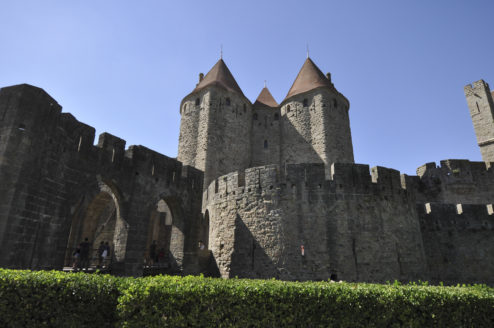The Languedoc is home to some of Europe’s oldest and most breathtaking fortified castles, sometimes referred to as Les Chateaux Cathars.
The Cathars were a Christian movement that appeared in the region in the 11th century. On more than one occasion the Cathar Chateaux protected this religious group from persecutors. One of the most famous Cathar châteaux is at Carcassonne.

Who Were the Cathars?
Like other Christian sects, Cathars held the faith of Jesus and his gospels. But, they rejected the lavishness of the Roman Catholic Church and stood against what they believed to be moral, spiritual and political corruption. Unusual and extreme, Cathar men and women rejected marriage and procreation. They were non-violent and strict vegetarians because they believed any kind of killing was sinful.
The Cathar interpretation of Christianity became popular with both Languedoc peasants and nobles. But, it was not to endure. When Pope Innocent III was elected in 1198, he’d had enough of Cathar dissent. He launched the Albigensian crusade, obliterating Cathars and their supporters. By the end of the 14th century, the Cathar movement had almost completely disappeared and tens of thousands of followers had been killed.
More than 700 years on, the Cathar legacy is powerful in the Languedoc.
Stunning castles (originally fortresses built for protection against enemies) still dot the countryside. Cathar history has inspired poets and writers alike, from the tales of the Knights Templar to King Arthur’s crusade for the Holy Grail.
It’s hard not to feel connected to the Cathar legacy when standing atop their ancient castles overlooking the storied Languedoc countryside.
Join us to tour Cathar strongholds and cruise the Canal du Midi in 2021.
Photo titled “Colombe see through” courtesy flickr user Delphine Ménard. Photo link: http://www.flickr.com/photos/67853626@N00/211788479/
